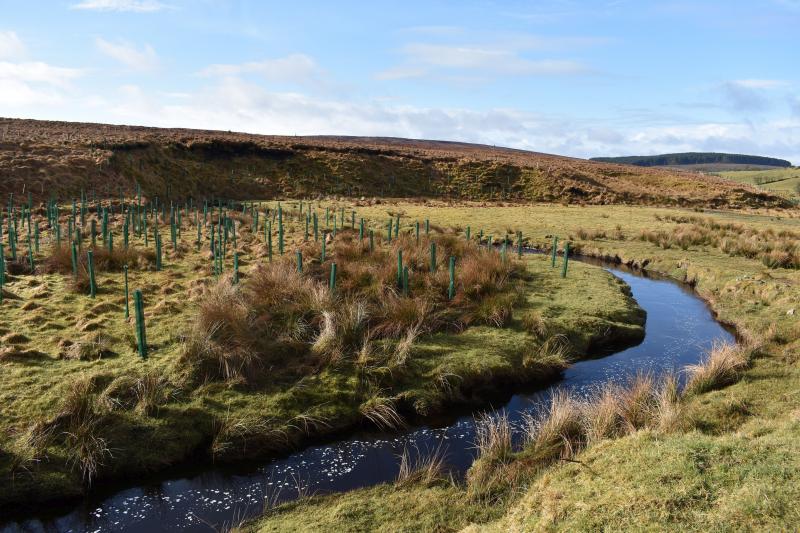
Over 2,500 native trees now dot the banks of the Burntollet River in County Londonderry thanks to local farmers and landowners.
The riverside planting comes from a partnership between the Loughs Agency and the Woodland Trust, with support from Northern Ireland Water and the backing of local farmers.
The new additions – a mix of oak, alder and willow – already cover some 3 hectares (7 acres) of land. And according to the partners, this is just the beginning of a large landscape venture.
Planting by the banks of the Burntollet River will ultimately stretch over a 10-mile strip and it is hoped that, with collective efforts, the project will be replicated elsewhere in the Valley.
Farmers are planting for a variety of reasons. The stabilisation of riverbanks, improved drainage and shelter for livestock are high on the list; with wildlife and water quality also set to benefit.
Dave Scott is the Woodland Trust’s Treescape Development Lead and said: “As well as helping river quality, trees can help stop money from, literally, going down the drain.
“As the trees mature, their roots will help to bind and strengthen the sides of the river preventing erosion. In the Faughan Valley, landowners have seen parts of their fields essentially wash away, and while trees can’t solve everything, they certainly could have reduced the damage.
“Trees planted in the right place also help to prevent the run-off of resources such as fertilisers – soil erosion and nutrient loss are a real cost to the farming business.”
Studies at Pontbren in mid-Wales, according to a Woodland Trust, found that water absorption into the ground increased by 60 times within five metres of tree shelterbelts, and after just three years of planting.
Roy Taylor, Catchment Manager for Northern Ireland Water, commented: “Trees planted along river banks can provide many water management benefits, acting as a buffer zone to prevent pesticide drift from reaching watercourses and tree roots help stabilise river banks.
“The resultant improvement in water quality coming into water treatment works reduces chemical and power usage, thereby reducing both treatment costs and the carbon footprint.”
